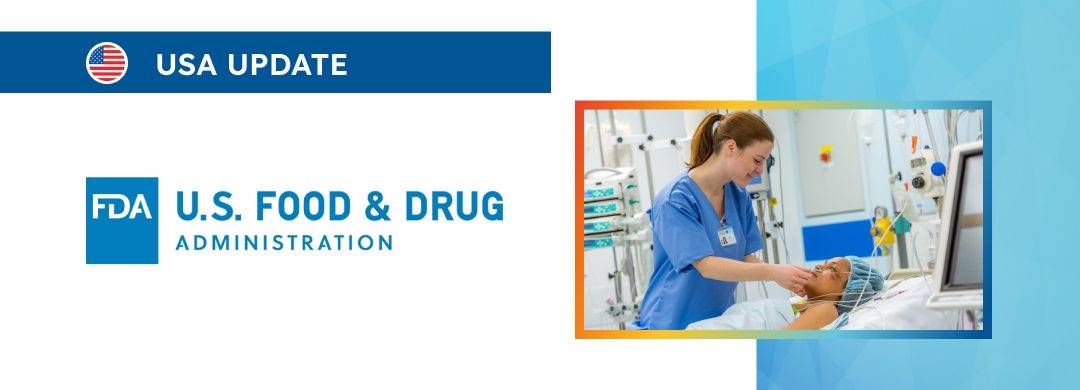The new article highlights the aspects related to the review process itself.

Table of content
The Food and Drug Administration (FDA or the Agency), the US regulating authority in the sphere of healthcare products, has published a guidance document dedicated to the 510(k) Third Party Review Program and Third Party Emergency Use Authorization (EUA) review.
Once finalised, the document will provide an overview of the applicable regulatory requirements, as well as additional clarifications and recommendations to be taken into consideration by medical device manufacturers and other parties involved to ensure compliance thereto.
At the same time, provisions of the guidance are non-binding in their legal nature, nor are they intended to introduce new rules or impose new obligations.
Moreover, the authority explicitly states that an alternative approach could be applied, provided such an approach is in line with the existing legal framework and has been agreed with the authority in advance.
Introduction to Third Party Review Process
First of all, the authority emphasizes the importance of Third Party Review Organizations in the medical device regulatory landscape.
These organizations act as an extension of the FDA’s review process, applying equivalent scrutiny to evaluate the safety and efficacy of medical devices.
They examine scientific and technical data in submissions, ensuring that the devices meet the stringent standards set by the FDA before they enter the market.

Device Eligibility Determination
The document further describes the preliminary steps taken by review organizations to determine whether a specific medical device falls within their purview for evaluation.
The process involves a thorough assessment of the organization’s expertise against the device type, ensuring a match between the device’s complexity and the reviewer’s knowledge.
The authority also emphasizes the necessity for organizations to consult official FDA resources, like the product code classification database, to verify the eligibility of devices for third-party review.
This step is crucial to maintain the integrity of the review process and to ensure that only qualified devices are assessed.
In instances where a device is deemed ineligible after initial acceptance, the review organization must promptly inform the submitter and terminate the review.
This protocol ensures transparency and efficiency in the review process.
Prevention of Forum Shopping
Another part of the guidance addresses the issue of so-called “forum shopping” where submitters may seek multiple opinions to find a favorable review.
The section outlines the strategies that organizations should implement to detect and prevent such practices, thereby upholding the impartiality and credibility of the review process.
Personnel Assignment and Qualifications
Apart from the above, the document highlights the key points related to the composition of the review team.
In particular, it details the criteria for selecting Product Specialists and the potential inclusion of Technical Experts to form a comprehensive review panel, ensuring a multidisciplinary approach to the evaluation.
The relevant section underscores the importance of the qualifications and neutrality of Technical Experts, highlighting how their expertise significantly influences the review’s outcome.
Review
According to the guidance, review organizations are advised to be well-acquainted with relevant FDA guidance documents.
This knowledge base is critical for ensuring that the review process is aligned with current regulatory standards and practices.
Furthermore, the document stresses the significance of being aware of any prior communications between the submitter and the FDA, as this historical context can be pivotal in understanding and assessing the current submission.
Ensuring Administrative Completeness
A separate part of the guidance elaborates on the protocol for ensuring that each submission is complete and ready for a substantive review.
It highlights the role of tools like eSTAR in streamlining the submission process and ensuring compliance with FDA requirements.
The document also differentiates between the review processes for 510(k) submissions and EUA requests, outlining the specific focus areas and criteria used in evaluating each type.
Additionally, the document describes the procedures for identifying, communicating, and resolving deficiencies found during the review.
It emphasizes the importance of thorough documentation and transparent communication between the review organization and the submitter.
The guidance also details the preparation of review documentation, emphasizing the need for a clear, comprehensive description that covers the device’s functionality, the evidence provided by the submitter, and the evaluation process.
The authority explicitly states that by the relevant policy, each submitter should have only one active submission per device at a time, and emphasizes that it constitutes a crucial aspect of maintaining order and clarity in the review process.
Conclusion
In summary, the present guidance reiterates the essential role of Third Party Review Organizations in the regulatory framework.
It outlines their responsibility to conduct thorough, unbiased evaluations in line with FDA standards, contributing to the safety and effectiveness of medical devices in the market.
How Can RegDesk Help?
RegDesk is an AI-powered Regulatory Information Management System (RIMS) designed to simplify global compliance for medical device companies. With regulatory intelligence covering 120+ markets, RegDesk helps you prepare and publish global submissions, manage standards, conduct impact assessments, and stay ahead of regulatory changes all from a single, centralized platform. Expanding into new markets has never been easier.

